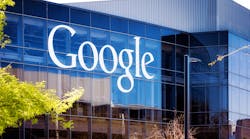Google Fiber Reflections:
Google Fiber learned what most readers of this publication already knew: the broadband access business is tough. It’s not an electrical engineering problem, (and I have a BSEE). It’s a civil engineering problem. The infamous Moore’s Law doesn’t apply. If it did a bucket truck would fit in your hands. They learned that make-ready is insane, and that incumbents can come up with many creative lawsuits to halt or hinder competition.
Outside Plant professionals should laud Google Fiber. Regardless of their future strategies, they’ve made gigabit part of the vernacular, and clarified the real and widening digital divide. They’ve also proven the current broadband model is broken.
While incumbents were talking about introducing speeds of 50 to 100 Mbps, Google Fiber changed the game and began offering speeds of "up to" a gigabit. (Note how the media gave Google Fiber a pass on the terminology "up to".) The promise of Google and gigabit fiber led to more than 1,000 cities and towns applying to be the first recipients of the promise. Thus, gigabit broadband became the new perceived normal.
Not surprisingly, incumbents offering similar services over their GPON networks were quick to point out their subscribers could get "up to" a gigabit as well. Google Fiber also forced incumbents to announce their own gigabit upgrades. Interestingly, the areas they announce their gigabit plans were the same areas that Google Fiber did.
Google Fiber benefited the incumbents since they created what’s been called the halo effect where consumers who cannot get a gigabit service upgrade to their Internet access to pricier higher speed data tiers. Hence, just the threat of Google Fiber benefits the entire broadband ecosystem.
At this point, it should be noted that Alphabet/Google benefits from gigabit broadband regardless of who provides it. They are fundamentally an advertising company and a 4K video ad will generate more revenue than a 1K video ad.
REAL Access?
The term digital divide may be trite, but it’s real and it’s getting wider. Fueled by the media glow of Google Fiber, municipalities around the world realized that being on the wrong side means certain community decline. Where the incumbents failed to act, many communities have taken broadband matters into their own hands. Community broadband networks are growing. What’s more, local government officials are realizing that a fiber network can be run as a utility and is the foundation for their smart city.
Globally, there are many variants of public and private partnerships dividing up ownership and operations. There’s no reason, short of regulations, that community broadband momentum won’t continue to build. Keep in mind that community broadband networks face the same business model challenges that Google Fiber faces.
Large incumbents, telco and cable, would likely argue that today’s broadband model is working well. In fact, they’d point to the F.C.C. annual Broadband Report as proof. For them, today’s model works well since it’s their model. They own the "wire" and they determine who can offer services over their wires: namely themselves.
The last change they want to their ecosystem is for anyone, Google Fiber or the City, to overbuild in their territories. Hence, the creative legal barrage. Yet, innovation drives economic growth and societal improvements, and innovation is the biggest threat to any incumbent in any industry. But, as Google Fiber found out, building the same network and offering the same services as large, well-entrenched incumbents is not economically viable.
The standard incumbent service offering is the so-called Triple Play offering of voice, video, and Internet access services. The end-to-end delivery systems, technical expertise, marketing machines, legal structures, and operational methods and procedures, have taken decades and billions of dollars to create. This is a big advantage to the incumbents, of course. Google may have thought that offering super-fast Internet access would be sufficient to capture take rates large enough to sustain the business of access. But, it was not.
The challenge with offering only Internet access is there are not enough cord cutters today. (Nor are there enough forecasted for the near future.) The trend toward "everything over-the-top" or "everything streaming" is real. However, large demographic segments of the population want traditional TV services, and smaller, yet significant, segments want traditional landline voice services. Google Fiber learned there aren’t enough cord cutters to reach break-even take rates.
Thus, Google initially offered a Double Play bundle of Internet and Video. Video services being the traditional channel line-ups, DVR, On-Demand, etc. That said, building end-to-end video delivery systems in every territory is both complex and costly. And the rising cost of video and media content affects both new entrants and incumbents alike. Simply put, costs rise every year, and the number of cord cutters grows every year. So, the video service provider must amortize increasing cost over declining number of subscribers.
Google Fiber even decided to climb the mountain of voice regulations and offer traditional voice services. The video challenges they faced were real as well. The business model behind creating an entire end-to-end telco-grade voice infrastructure to service fewer and fewer subscribers did not work.
Google Fiber realizes that deploying cables down each street is tough. Therefore, the company is looking at various wireless alternatives.
Yet, wireless is not going to eliminate the need for fiber. Instead, it’s going to increase the need for fiber for high-speed backhaul. 5G is going to be wonderful, but I’m skeptical that 5G is going to be the gigabit broadband solution of choice for the residential market. I may reconsider this when spectrum is cheap enough to economically justify streaming a 2-hour 1K or 4K movie to a screen inside a stationary structure. Emerging fixed wireless technologies are promising as well. And some of them may be great solutions for specific neighborhoods. Yet, these alternative technologies will take time to vet and execute.
Underlying Impact
Google Fiber, regardless of their future, has already benefited the entire broadband ecosystem in many significant ways. They’ve shown gigabit broadband networks can be deployed, they’ve elevated the gigabit narrative, and they’ve accelerated the community/municipal broadband phenomena.
Where they went awry is with their business model. A fundamental aspect of innovation is that new incumbents must offer something drastically new and sustainably different to fight off the incumbents.
Google Fiber must have thought that offering (up to) gigabit Internet Access rates was drastically new. It was, at the time, but incumbents were quick to counter, Therefore, Google Fiber lacked sustainable differentiation. Plus, as discussed, there were not enough cord cutters to attain break-even take rates for the large upfront civil works construction project (i.e., running fiber down the street).
The traditional video services are even more problematic. While we live in a transition period in which many end users enjoy content via streaming. Yet, demographics evolve over decades. So, a Triple (or Double) Play overbuilder must make the large ($1-$10M) investment in video delivery infrastructure while knowing that the number of customers served will continuously decrease year-to-year. The added upfront investment demands an even higher take rate to break even.
Fixed wireless technologies and 4G/5G/LTE networks all have a role in making broadband truly ubiquitous. Regardless of the vendor-driven hype, they will not replace or eliminate the need for fiber-rich access networks. Nor will disparate, emerging, and proprietary unlicensed wireless technologies and wireless-mesh technologies become the foundation for the smart city. Cities must realize that achieving their smart city goals mandates a fiber-rich foundation.
Google Fiber should be lauded for their efforts, and, arguably, the entire broadband ecosystem has already benefited. However, we are at a crossroads. Many communities are being forced to build their own fiber networks for survival purposes. That said, most communities are served by 1 or 2 incumbents. History has shown that incumbents will fight innovative new entrants with PR and legal strategies, among others. History has also shown us that incumbents who fail to act will become the 21st Century "railroad" companies.
Google Fiber was a new and aggressive entrant. However, by offering the exact same services as the well-entrenched incumbents, they surprised us by not following their mission of innovation when facing the incumbents of the ICT industry.





